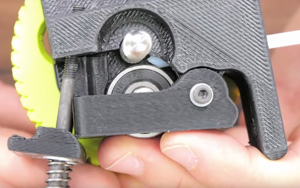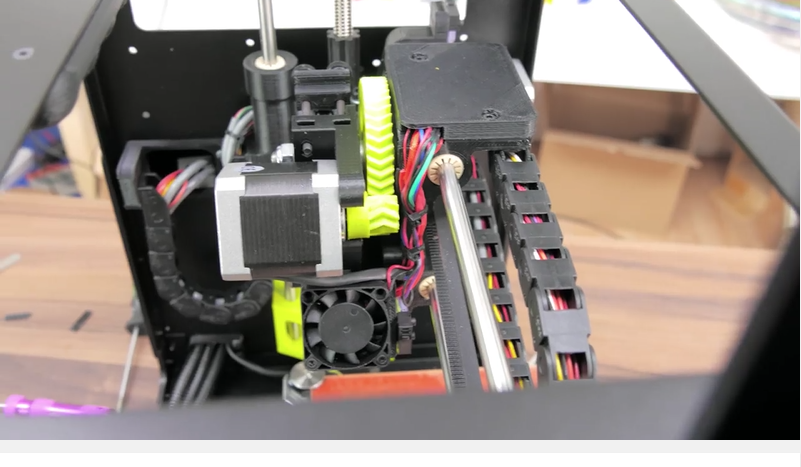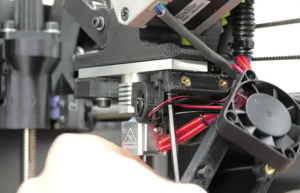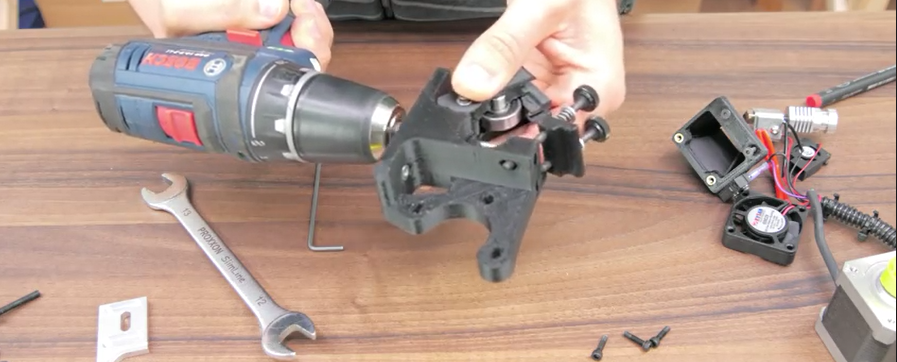 The Hackaday website has no shortage of really practical and useful 3D printing tips and projects, and Brian Benchoff’s recent article on converting a 3D printer from 3mm to 1.75mm filament makes so much sense that you can immediately see its usefulness. Benchoff begins with an excellent question about printer filament. How did it get decided that the two sizes of filament would be 3mm and 1.75mm? And it seems Thomas Sanladerer, whom Benchoff describes as “YouTube’s 3D printing guru,” took this question about filament size as a challenge and decided to figure out how to convert a LulzBot Mini so it can accept 1.75 mm filament.
The Hackaday website has no shortage of really practical and useful 3D printing tips and projects, and Brian Benchoff’s recent article on converting a 3D printer from 3mm to 1.75mm filament makes so much sense that you can immediately see its usefulness. Benchoff begins with an excellent question about printer filament. How did it get decided that the two sizes of filament would be 3mm and 1.75mm? And it seems Thomas Sanladerer, whom Benchoff describes as “YouTube’s 3D printing guru,” took this question about filament size as a challenge and decided to figure out how to convert a LulzBot Mini so it can accept 1.75 mm filament.
You may be asking yourself why this even matters, and a few comments on Sanladerer’s instructional video suggest that people have varied reasons for the filament they choose. Some prefer 3mm because it’s stiffer or “has more linear extrusion resolution,” while another commenter suggests some exotic filament only comes in 1.75mm, which is more common and “pushes less material” per print.
Whatever your motivation to try this conversion from 3mm to 1.75mm, Sanladerer and Benchoff have left you with detailed instructions. To convert the popular LulzBot Mini to take 1.75mm filament, Benchoff writes that you need only a few things: a new hotend suitable for 1.75mm filament, a 4mm drill, a piece of PTFE tubing, and wrenches and allen keys.
According to Sanladerer, there are a few basic steps here that should be followed. The first is to disassemble the screws on the Lulzbot’s extruder, and Sanladerer shows you how to reach all four screws and disassemble the extruder to access the filament path where you will put in the new PTFE tubing. First you need to use your 4mm bit drill on the filament path. Here, Sanladerer explains that essentially your goal is to insert your teflon tubing so that it guides the filament as closely to the hot bolt and idler without colliding with it. At this point you will place some filament in the path to test how close it is to the hot bolt.
Next, after the new tubing is cut using a sharp knife at a 45 degree angle, old wires need to be cut, and the 3mm version of the hotend needs to be swiped for the 1.75mm version. Once the hotend is rewired, all components can be reassembled – ensuring that the hot bolt and teflon tubing line up, of course. Then reinstall the motor to guarantee tension with the big drive gear.
 The final step, once everything is reassembled, is to change the slicer’s diameter. In Sanladerer’s case, this required some additional maneuvering, but again, he has included detailed instructions on this as well.
The final step, once everything is reassembled, is to change the slicer’s diameter. In Sanladerer’s case, this required some additional maneuvering, but again, he has included detailed instructions on this as well.
So now you know how to convert your Lulzbot Mini 3D printer to take 1.75 mm filament, thanks to Sanladerer’s video, which you can watch below. Do you have any intentions of trying this hack? Let us know in the Lulzbot Mini forum thread on 3DPB.com.
Subscribe to Our Email Newsletter
Stay up-to-date on all the latest news from the 3D printing industry and receive information and offers from third party vendors.
You May Also Like
Profiling a Construction 3D Printing Pioneer: US Army Corps of Engineers’ Megan Kreiger
The world of construction 3D printing is still so new that the true experts can probably be counted on two hands. Among them is Megan Kreiger, Portfolio Manager of Additive...
US Army Corps of Engineers Taps Lincoln Electric & Eaton for Largest 3D Printed US Civil Works Part
The Soo Locks sit on the US-Canadian border, enabling maritime travel between Lake Superior and Lake Huron, from which ships can reach the rest of the Great Lakes. Crafts carrying...
Construction 3D Printing CEO Reflects on Being Female in Construction
Natalie Wadley, CEO of ChangeMaker3D, could hear the words of her daughter sitting next to her resounding in her head. “Mum, MUM, you’ve won!” Wadley had just won the prestigious...
1Print to Commercialize 3D Printed Coastal Resilience Solutions
1Print, a company that specializes in deploying additive construction (AC) for infrastructure projects, has entered an agreement with the University of Miami (UM) to accelerate commercialization of the SEAHIVE shoreline...































